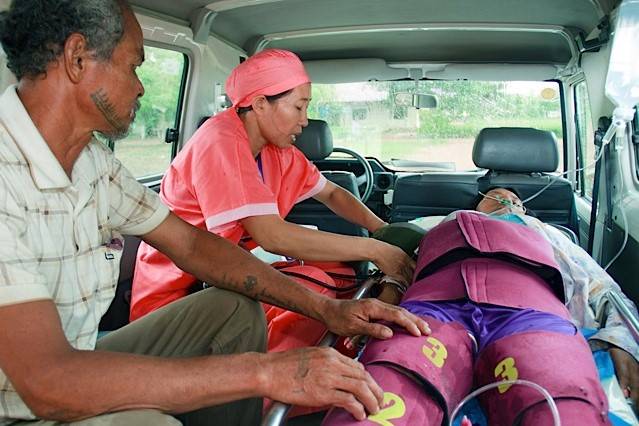
“Miracle Suit†inspired by NASA research saves new mothers around the world
Her condition, known as postpartum hemorrhage, can result from a number of different complications during childbirth. Left untreated, it can prove fatal.
Ames researchers and engineers proposed applying pressure to the woman’s entire lower body using an inflated anti-gravity suit, or G-suit — like tightly wrapping a gash on a limb.
G-suits prevent blood from pooling in the legs through the use of air-filled bladders. NASA has long relied on them to keep test pilots from blacking out during extreme acceleration, and astronauts use them during re-entry to squeeze the arms and legs and push blood back toward the head as they readjust to the pull of Earth’s gravity, read the NASA website.
The team at Ames quickly modified a G-suit so that it could supply a range of pressures and hurried it to the hospital. After wearing it on low pressure for just 10 hours, the woman began to recover, her body’s natural healing processes finally able to take over once the bleeding had slowed.
Three months later, doctors proclaimed her fully healed.
Under Pressure
Every year at least 70,000 women die from obstetric hemorrhage — mostly in the world's least developed countries.
In countries like the United States, effective medications, blood transfusions and surgery are readily available. But in many rural areas in developing countries, this type of care can be hours or even days away — time a hemorrhaging woman just doesn’t have.
Following the 1969 case, subsequent research at Ames led to a better understanding of the physiology of G-suits and the realization that even lower pressures could be used effectively to decrease bleeding and shift blood back to the heart and brain.
Drawing on this NASA research, Palo Alto, California-based Zoex Corporation developed the first commercially available pressure garment suitable for treating shock and blood loss in the early 1990s. Since the pressure didn’t need to be as strong as in military and aviation cases, the company scrapped the old-style G-suits for a non-pneumatic version using simple elastic compression.
In a 2004 study by Ames and other researchers, the garments saved 13 out of 14 patients in Pakistan who were in shock from extreme blood loss. In another study in Egypt and Nigeria, published in 2007, the garment reduced both blood loss and mortality from postpartum hemorrhage by 50 percent.
One of the people behind the studies, Suellen Miller, is the founder of the Safe Motherhood Program, which aims to reduce pregnancy- and childbirth-related deaths and illnesses across the globe.
She said the results were remarkable. “In the field of maternal health, we generally don’t see that kind of a reduction, and even more so when it’s the result of a single, simple intervention.”
By 2012, as Miller was finishing up a five-year randomized trial with the garment in Zimbabwe and Zambia, the World Health Organization and the International Federation of Gynecologists and Obstetricians both decided to officially recommend the device to treat postpartum hemorrhage.
A Dollar for a Life
Since then, 20 countries have purchased a lower-cost version of the pressure garment called LifeWrap, produced by a manufacturer founded by Safe Motherhood and the nonprofit PATH.
“We’ve determined that these suits can be used at least 70 times,” Miller says. “So we’re looking at a life-saving device that costs less than a dollar per use.”
Around the world, the Safe Motherhood Program spreads the word about LifeWrap. In the wake of Typhoon Haiyan, which ravaged the Philippines in November 2013, the Safe Motherhood Program donated garments to midwives working in disaster zones.
More recently, Miller and her colleagues conducted training for Doctors Without Borders and the Canadian Red Cross so they could use the garment in Ebola-stricken countries in Africa. LifeWraps have also been provided for ambulances in East Timor and are being used increasingly throughout rural Tanzania.
Miller thanks the space agency for the critical role it played in getting the technology to this point. “We’re taking this suit to the village, we’re taking it to the hut, we’re taking it to the poorest, most vulnerable, voiceless, powerless people grounded into the Earth, and making a difference for them,” she says.
Miller also reports that some of the doctors and midwives she has met have voiced their own thanks for the garment, which has taken many names over the years: they like to call it the miracle suit.
Image Credits: Safe Motherhood Program
Support Our Journalism
We cannot do without you.. your contribution supports unbiased journalism
IBNS is not driven by any ism- not wokeism, not racism, not skewed secularism, not hyper right-wing or left liberal ideals, nor by any hardline religious beliefs or hyper nationalism. We want to serve you good old objective news, as they are. We do not judge or preach. We let people decide for themselves. We only try to present factual and well-sourced news.







